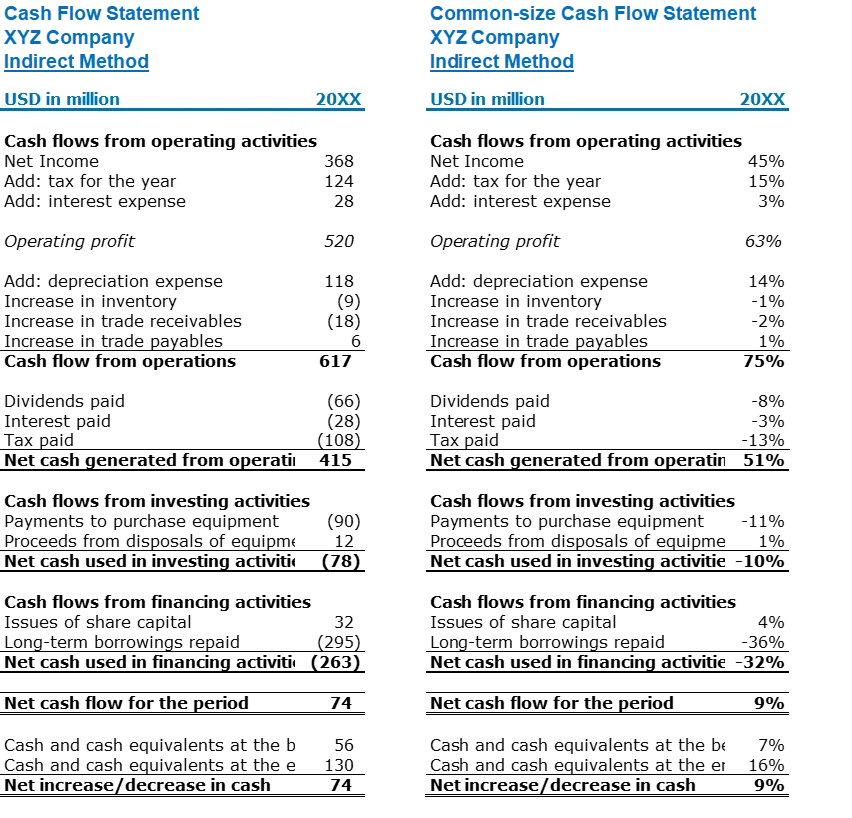Common Size Analysis
Horizontal- Vertical Analysis

What Is a Common Size Financial Statement ?
Common size financial statements present financial information as a percentage of a common base figure such as total sales or total assets. This type of statement allows users to make comparisons to competitors or industry averages. Common size financial statements commonly include the income statement, balance sheet, and cash flow statement.
Note: While small business would normally not have a competitors financial information available since they are not required to publicly report, they can compare their results to industry averages.
Base Figure
Common Size Income Statement
This common size statement presents each item as a percentage of sales, net sales, or total revenues.
Common Size Balance Sheet
This commonstatement presents each line item as a percentage of total assets.
Common Size Cash Flow Statement
This common size statement presents each line item as a percentage of total revenue.
These statements are just a variation of the Vertical Statements presented in the previous lesson. Instead of just comparing your own results, you include your competitors or industry averages in your analysis.
How It's Used
Common size analysis is good tool for comparing companies of different sizes in the same industry. Reviewing this data can help reveal areas where your own business can possible make improvements.
While we saw in earlier lessons what a Balance Sheet and Income Statement Analysis looked like, we didn't see a Cash Flow Statement Analysis.
Now we will.
Example Cash Flow Common Statement Analysis-Indirect Method

Example Cash Flow Common Statement Analysis-Direct Method

